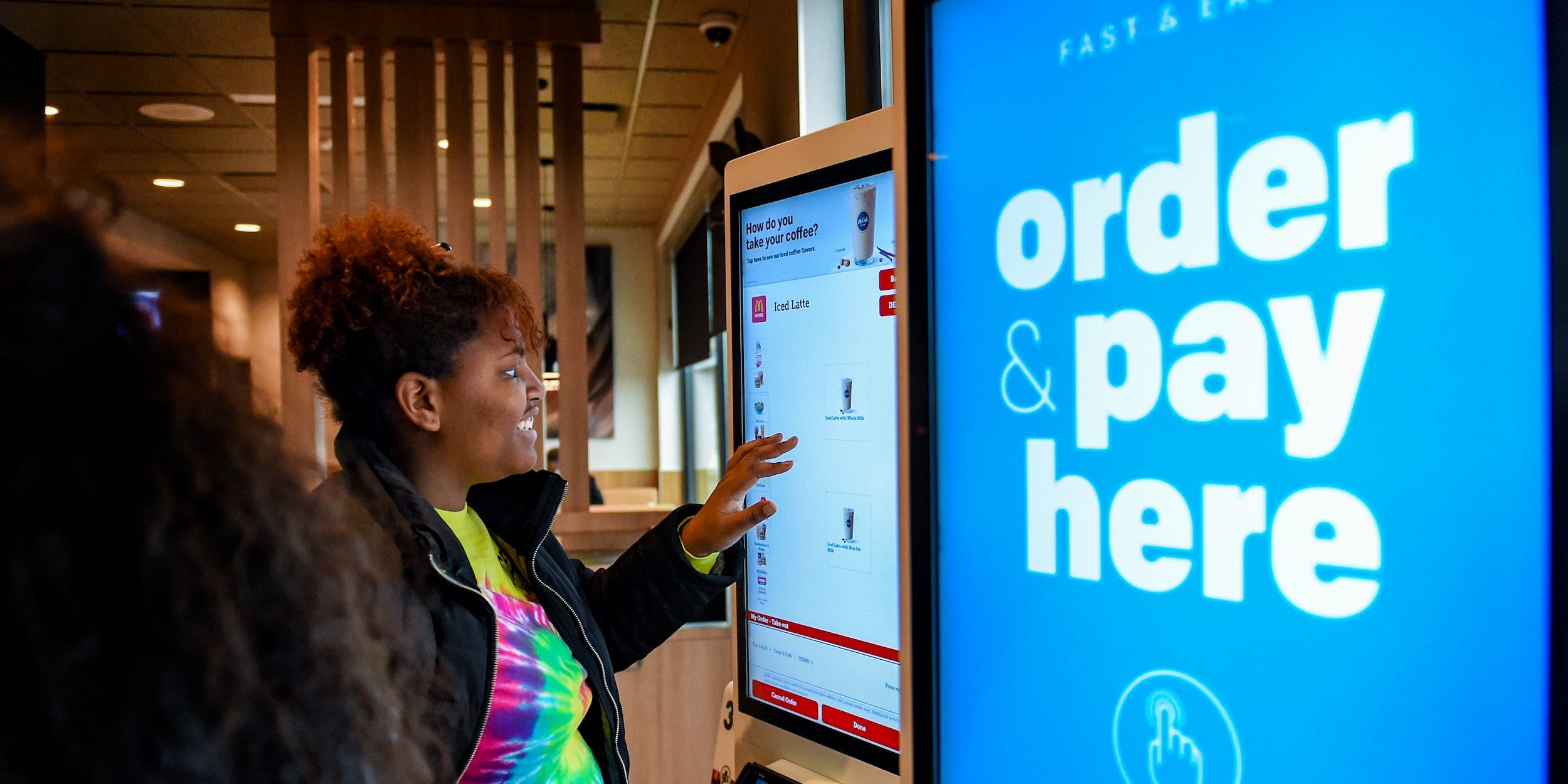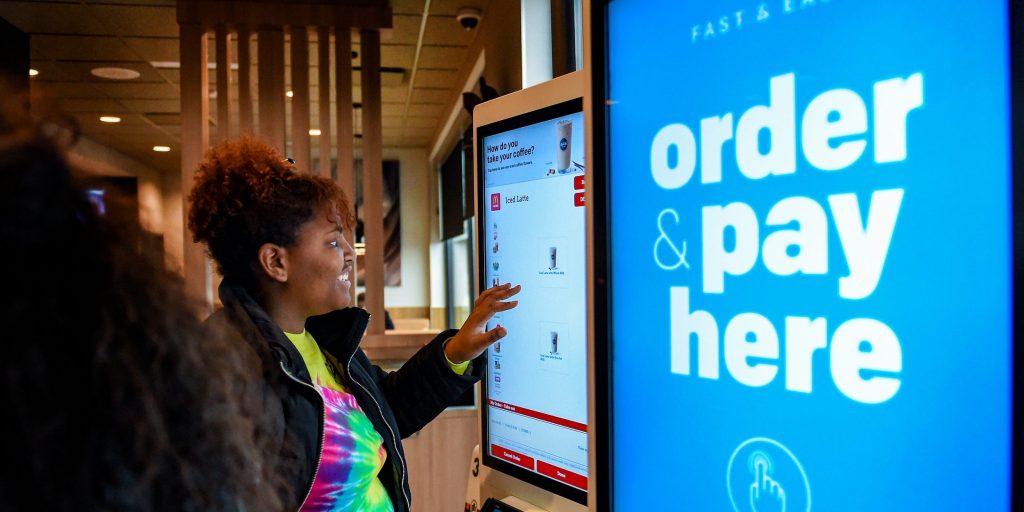
Natalie Kolb/MediaNews Group/Reading Eagle/Getty Images
- As the labor shortage rages, businesses are turning to automation to boost productivity.
- Many want to use new tech as a tool for their workers, instead of replacing employees altogether.
- The approach previews how firms struggling to hire might adapt to the post-pandemic labor market.
- See more stories on Insider's business page.
A new debate is unfolding as the economy settles into a post-pandemic normal.
One side espouses centuries-old views of automation, arguing such innovation harms economies by erasing jobs. The other sees automation as a welcome boost to productivity that pays dividends for workers in the long run.
Yet a new side has emerged that plans to split the difference. As the US reopens, some businesses plan to augment workers with pandemic-era innovations – call it automation-lite.
Here's why: Even though job openings rocketed to record highs, businesses still reported difficulties in filling roles. The immediate solution was also the simplest – pay people more. Average wages boomed over the last three months as companies competed for what little labor supply existed. President Joe Biden backed the pay bump, saying in a June 24 speech that the worker shortage gave Americans a new "bargaining chip."
However, some businesses aren't willing or able to raise wages and still need in-person workers. Shana Gonzales, an owner of four Checkers restaurant franchises in the Atlanta area, is one of them. Gonzales told The New York Times that, while she would like to hire as many as 30 people, there just weren't enough applicants. She already raised hourly pay to $10, but lifting it any higher would bite into sales, she said.
Automation, in the form of voice-recognition ordering at drive-throughs, presented an appealing middle ground. Gonzales could take some burden off her employees and complete the same amount of work with less staff.
"We'll go back and say why didn't we do this sooner," she told the Times.
The helpful robot: Boosted productivity and higher pay
Gonzales' story reflects a broader shift taking place throughout the US.
Productivity - the amount of output a worker can achieve in an hour - leaped 5.4% in the first quarter, the fastest rate of improvement in more than 20 years. This jump came as a surprise to economists who would typically expect productivity to remain steady, or even dip, per worker as the economy reopened, hiring ramped up, and work could be shared among more people. It suggests the productivity bump came from the continued use of some pandemic-era innovations.
Precedent suggests technological innovations and boosted productivity helps employees win higher pay. Larger paychecks could then translate to increased spending and drive stronger economic growth.
If the halfway-automated strategy like Gonzales' helps raise pay for employees while keeping most jobs intact, it could counter the ills seen in decades past. MIT professor Daren Acemoglu and Boston University professor Pascual Restrepo argue in a June working paper that automation was the most powerful force behind the destruction of middle-class jobs and the widening wage gap over the past four decades. Up to 70% of changes in US wage structure since the 1980s were connected to declining pay in automation-heavy industries. Doing automation differently this time around could mean the difference between a class-destroying tech boom and a healthy jump in productivity.
Gonzales is far from the only one balancing staff with automation. Applebee's rolled out tablets for waiters at nearly a third of its locations, allowing them to more accurately and quickly get orders from tables to the kitchen. Darden Restaurants, the owner of Olive Garden, said in June it will revamp its point-of-sale and management systems to help employees.
And while Dave & Buster's aims to expand its contactless payment service, it's also setting aside $5 million for hiring and employee retention. In-person workers are critical to servicing stronger demand through the summer, Margo Manning, the company's chief operating officer, said in a June earnings call. But the automation-lite model has allowed locations to cover more ground with fewer workers, she added.
The age of the robot worker might not materialize for decades. The age of the cyborg, however, is on the horizon.

